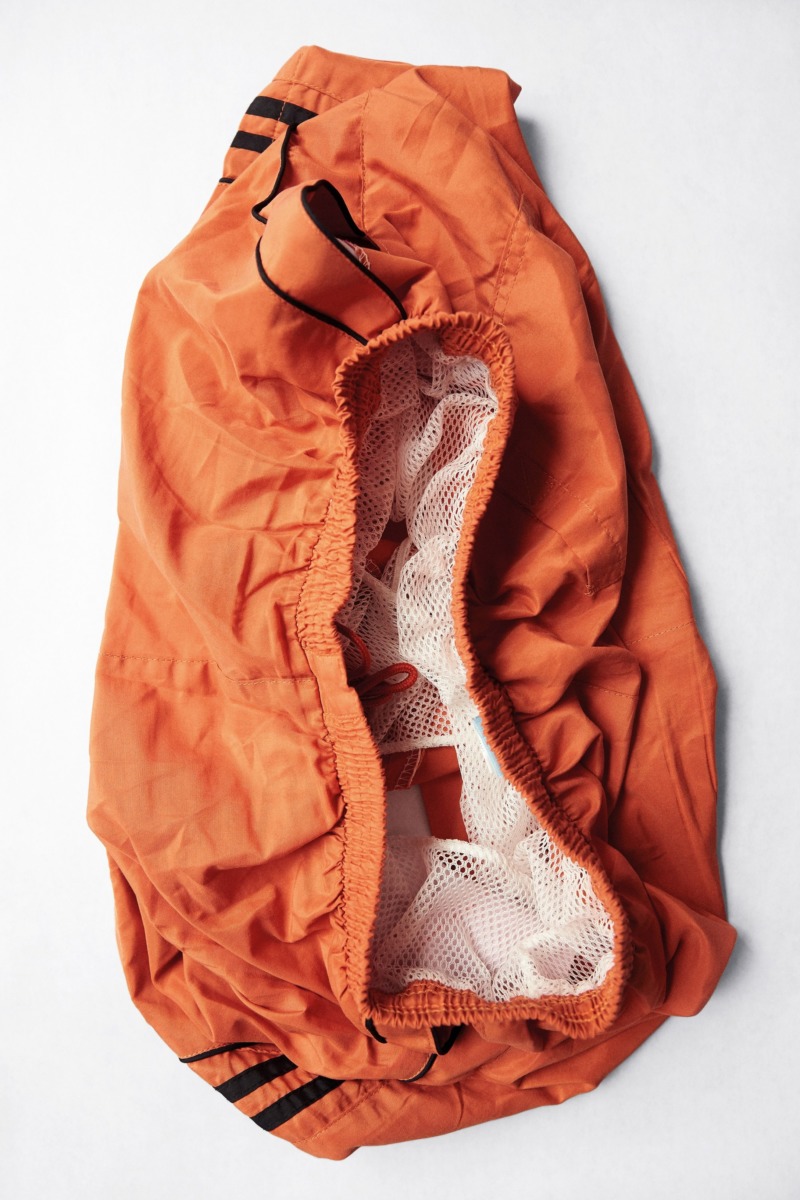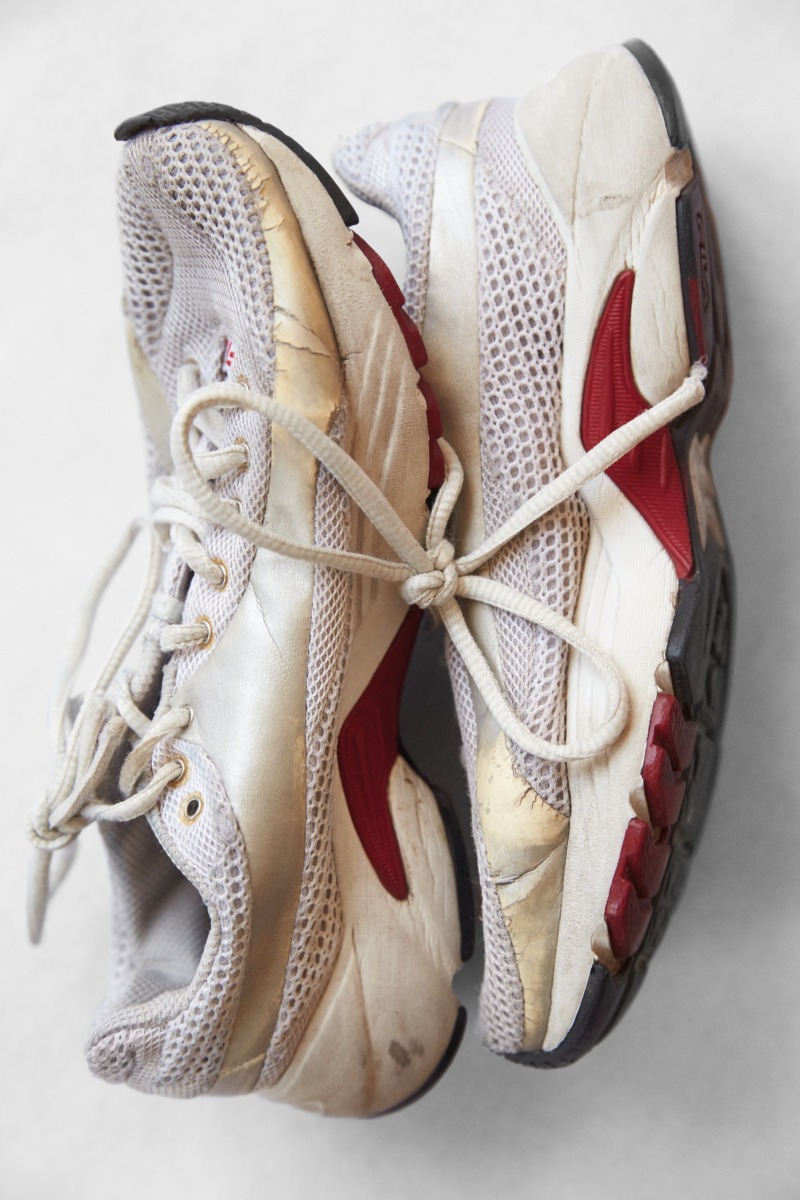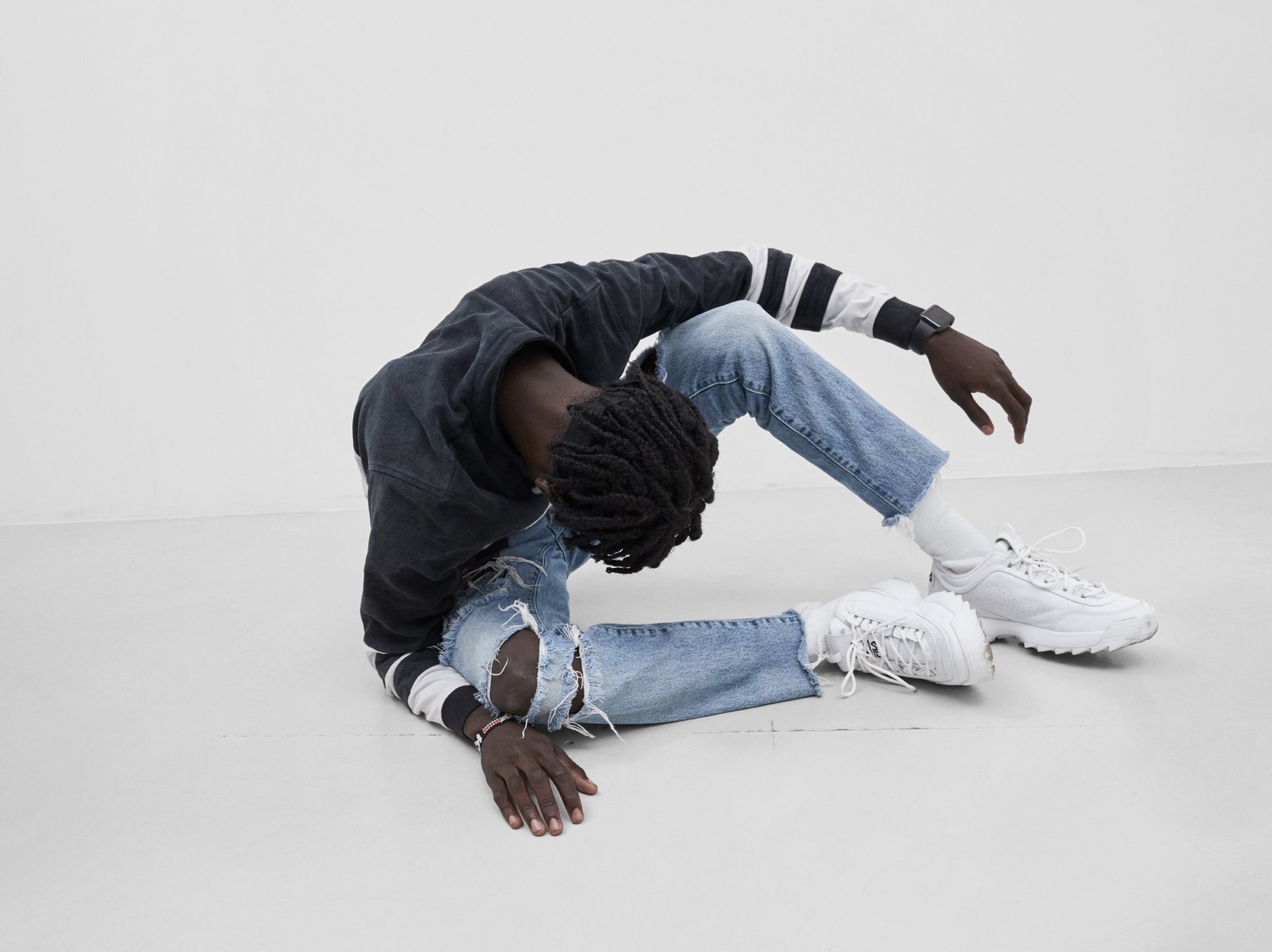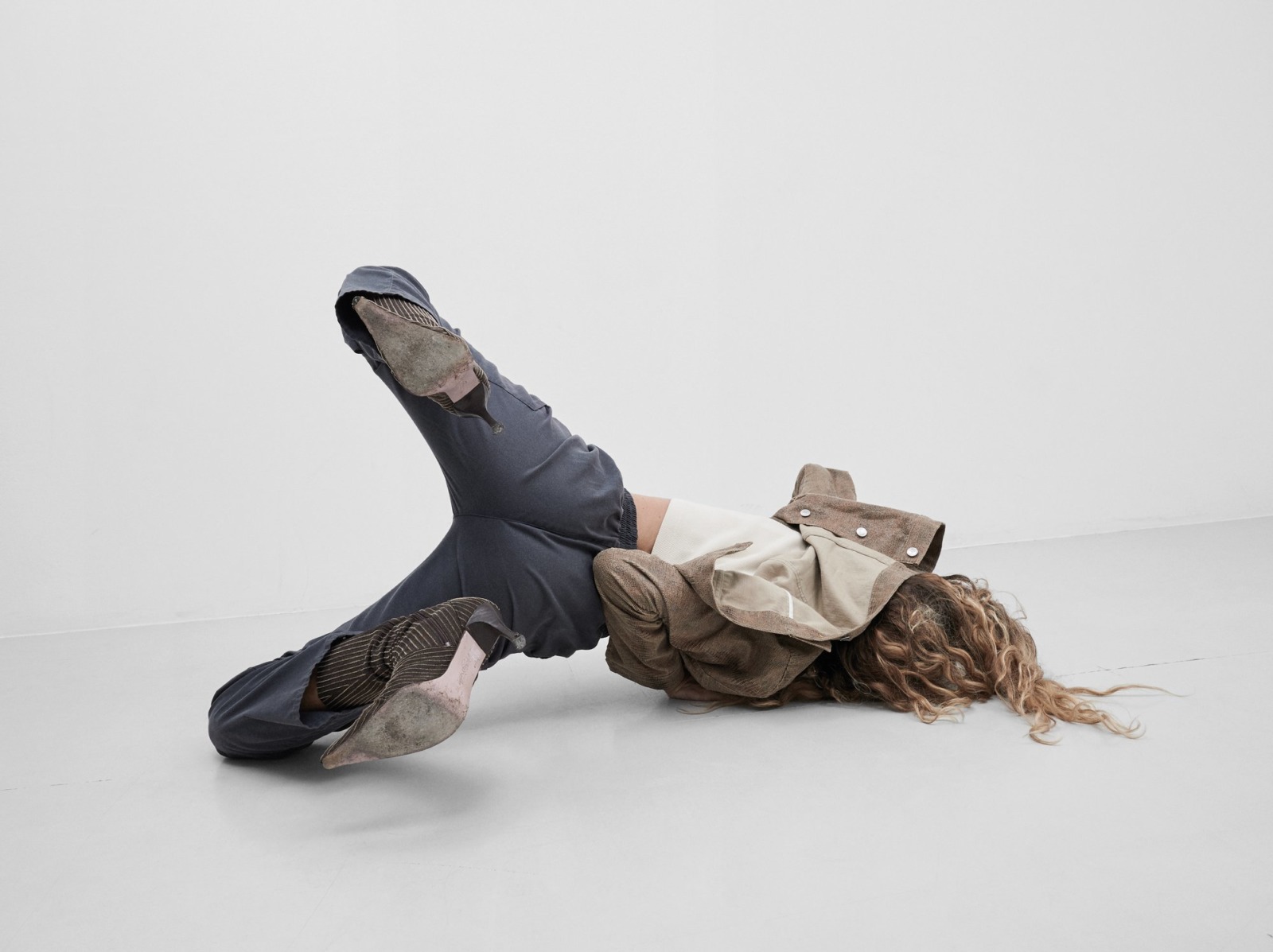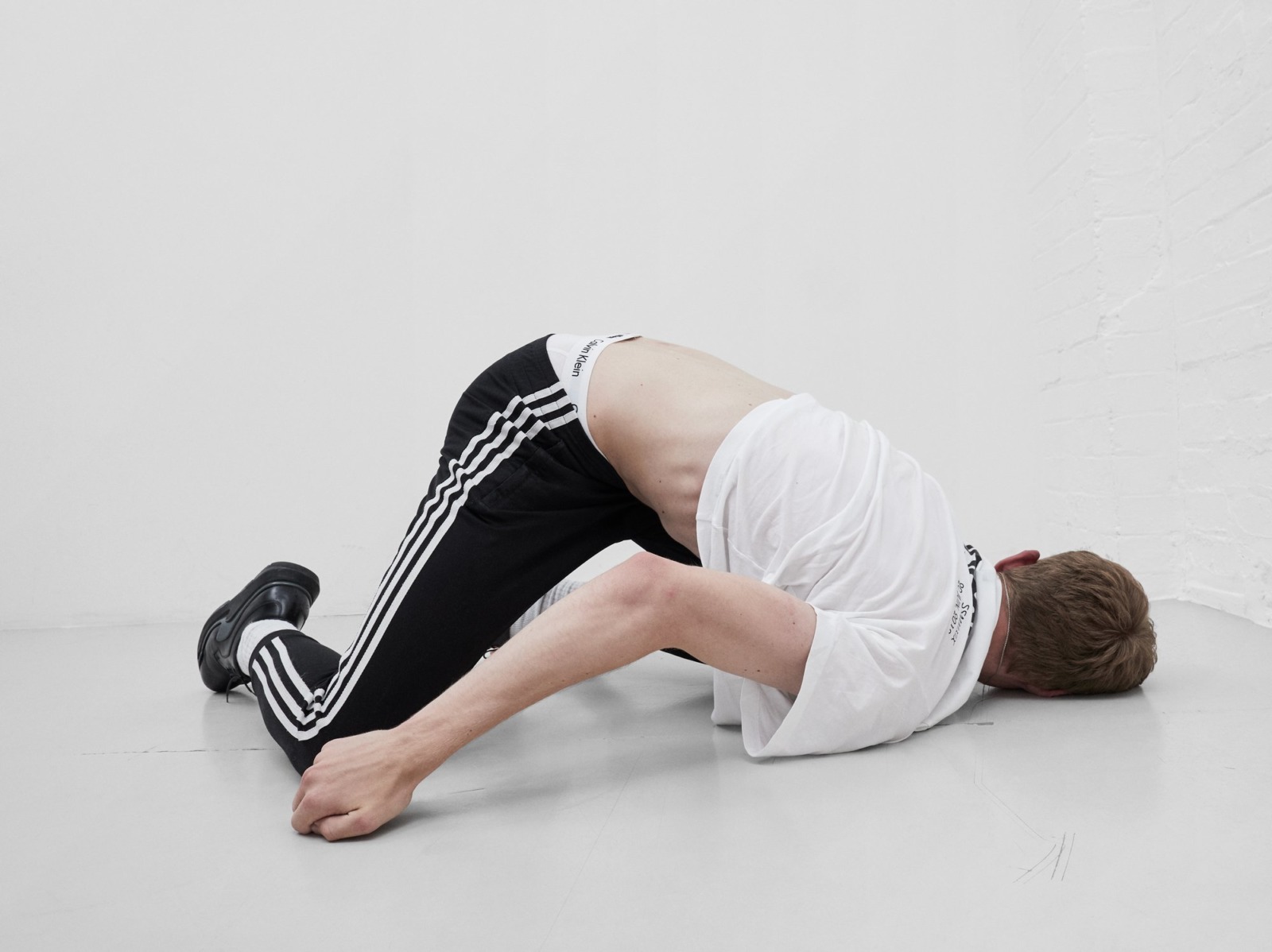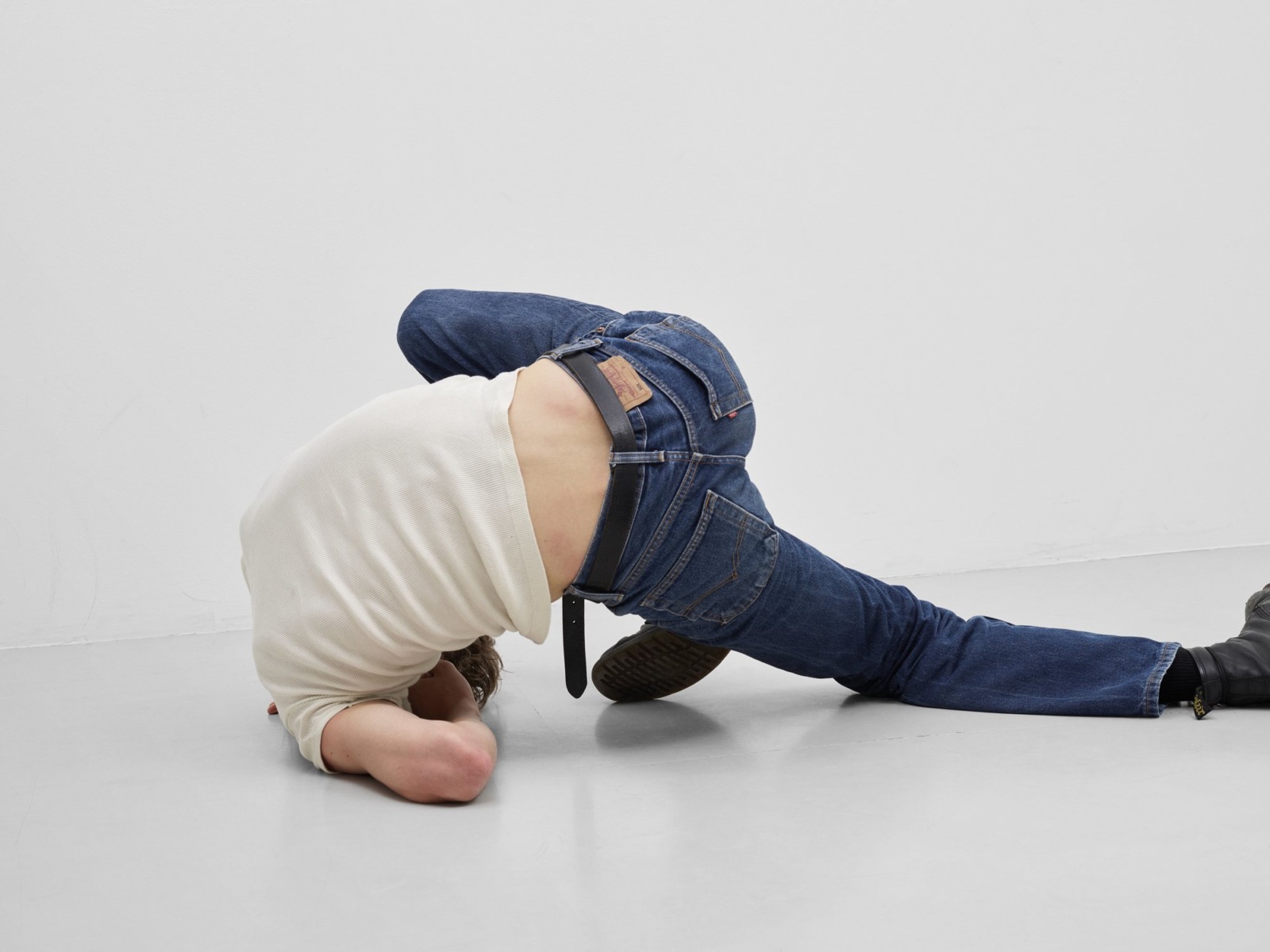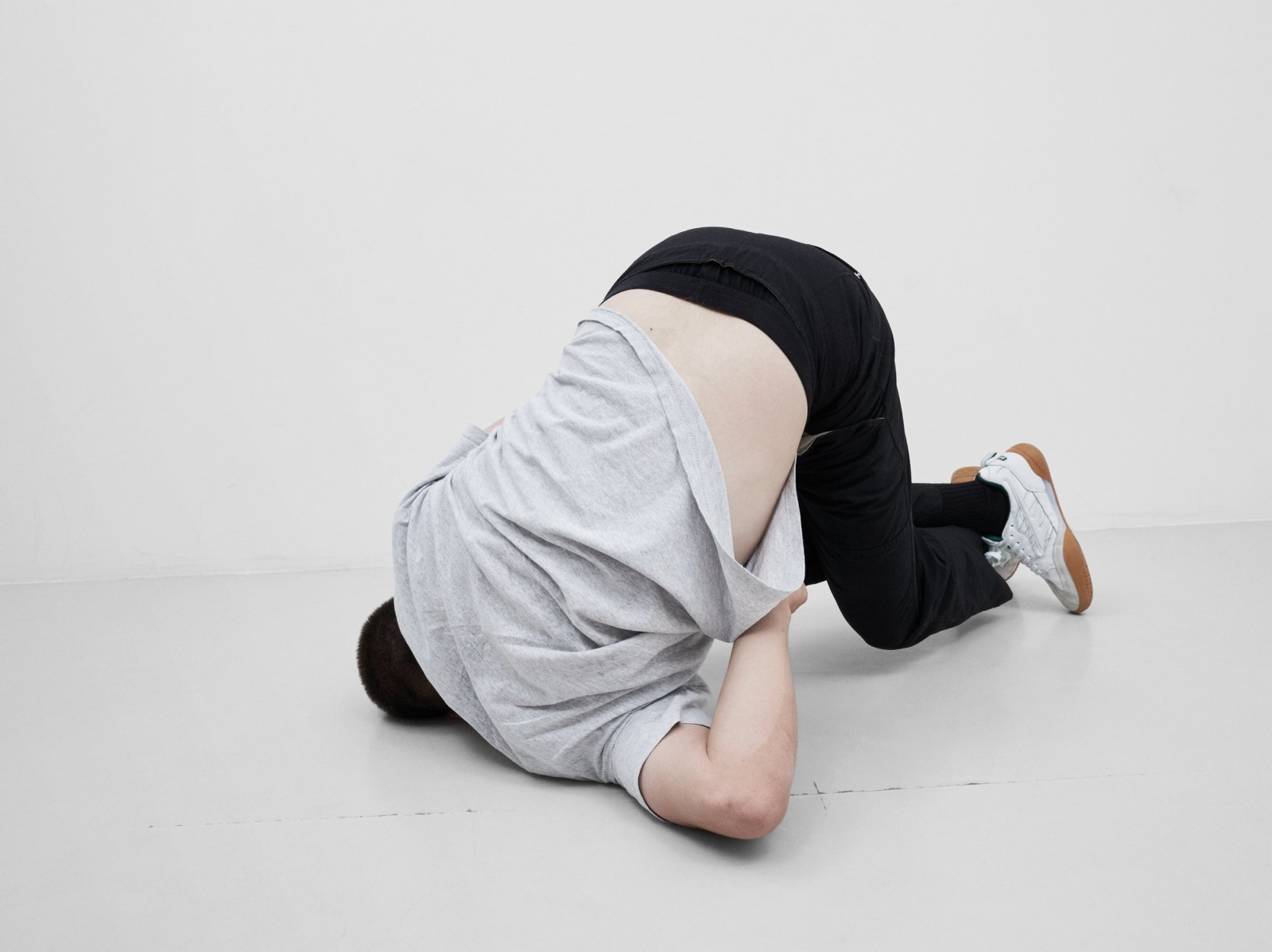Alessio Bolzoni – Abuse II: The Uncanny
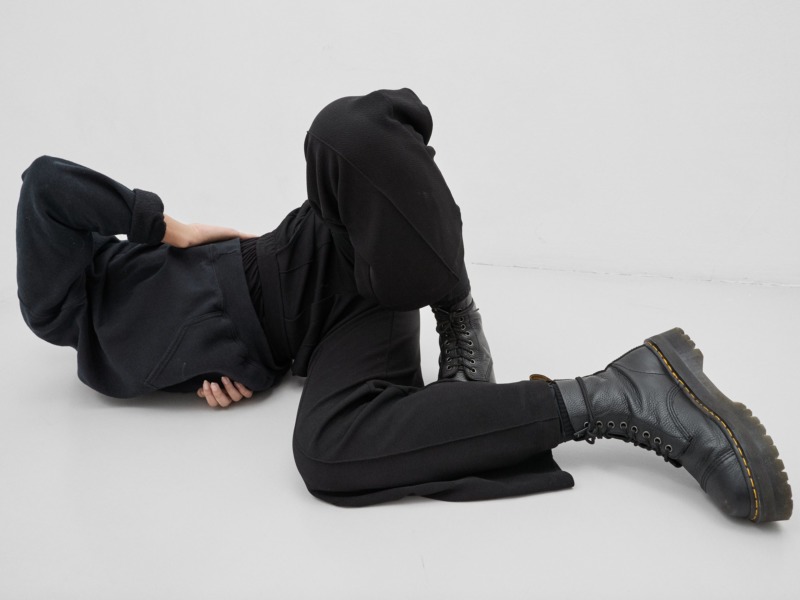
Still life – in English this term evokes the prosaic image of fruit bowls and tables, it lacks the emotional depth that the Romance languages give it, where in French it’s named ‘nature morte’, in Italian ‘natura morta’ – dead nature. Still life was the subject of Italian fashion photographer Alessio Bolzoni’s first book, ABUSE, in which he collected flowers, cut them, and kept them alive for six months before photographing them withered and dessicated, presenting a meditation on witnessing the moment of death. His second book, ABUSE II: THE UNCANNY (Self-published, 2019), again concerns suspended vitality, this time turning its focus to human subjects.
Bolzoni presents images that aren’t too far from his commercial work. In THE UNCANNY he draws on his extensive experience of fashion shoots for Dior Homme, Kris Van Assche, Louis Vuitton, and Adidas to present a collection of young streetwear models posing in the studio. But there’s something unseemly about these people. In each picture they lie contorted, their faces more or less obscured, legs wrapped over arms, backs arched, their weight supported on finger tips.
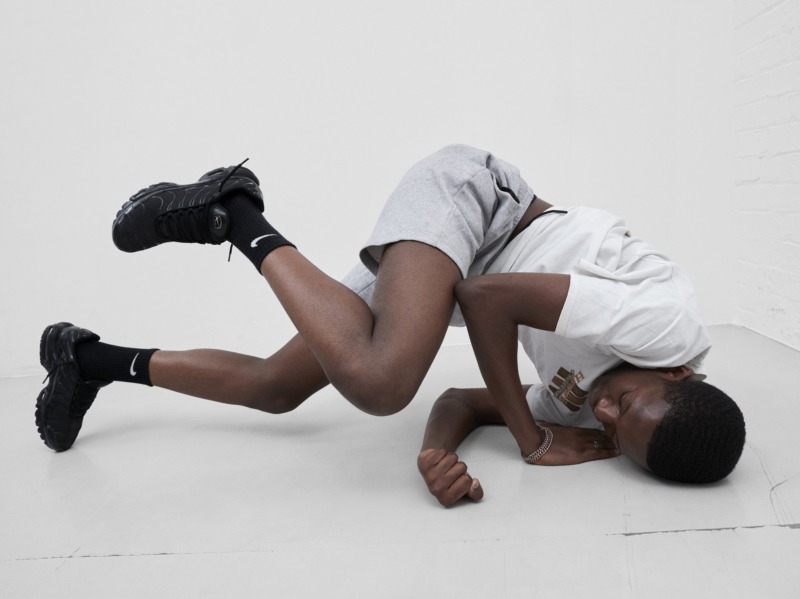
I don’t know whether to describe these as portraits or studies, to imbue them with closeness or distance. On the one hand, these are studies of athleticism and endurance: I hear the noise of the studio, the directions and the cameras. I feel his subjects straining into position, their muscles tensing, sinews stretched, their sweat pooling, their bodies held in place between the unbearable weight of the atmosphere above and the gravity of the earth below.
But their world isn’t our own. Each person is set against a pure white background that lends them to something close to a classical sculptural quality, detaching them from Earth, placing them in a realm of pure form. In this, there’s a necessary dehumanisation of the models, a suppression of movement and emotion. Their faces, when they aren’t obscured, lack any suggestion of pained struggle. They are less than individuals, they become simply their limbs and their clothes, the sum of their contorted parts.
THE UNCANNY is supplemented by THE EVENT, a smaller, soft-cover insert which seems to inhabit the same studio, with the same bare white background, the same formal, composed photography, though this time depicting exclusively studies of worn clothes – faded shorts, creased jackets, muddy shoes – turned inside out and crumpled on the floor like they’ve been recently stripped off and discarded. Some of the photographs are paired with one showing a detail of the other. It feels like looking closer at the thing in front of me, paying attention to a detail, offering a closer look at the folds of the fabric, the seams and stitching that once touched to the noticeably absent bodies.
These clothes weren’t, as I first suspected, part of a fashion shoot; in the summer of 2016 Bolzoni had met a Syrian man in the streets of Milan, a refugee of the civil war fleeing his home and everything he knew. Having arrived recently on the southern coast of Italy, following a passage across the Mediterranean, he carried literally nothing but the clothes on his back, which he then laid on the pavement to sell to passers by. Bolzoni bought the clothes, photographed them, and now presents them.
When I first saw Bolzoni’s photographs I thought they were too familiar – if unconventional – too bound up in the tropes of fashion photography to stand on their own. But in the pairing of these books, and in my consecutive reading of them, I now recognise their role in the estrangement. I’m reminded of Sigmund Freud’s characterisation of the uncanny, as something “terrifying which leads back to something long known to us, once very familiar.”
These shorts, these ragged t-shirts and trainers, are the remnants of an inhumane border regime. They are reminders of those who have risked everything and been left with nothing. These people, twisted and contorted, are those many who didn’t make it, those in the rubble of war, in the hulls of ships, at the bottom of the Mediterranean. Thinking again on how to describe these picture, ‘still life’ is inadequate; these are pictures of death.

